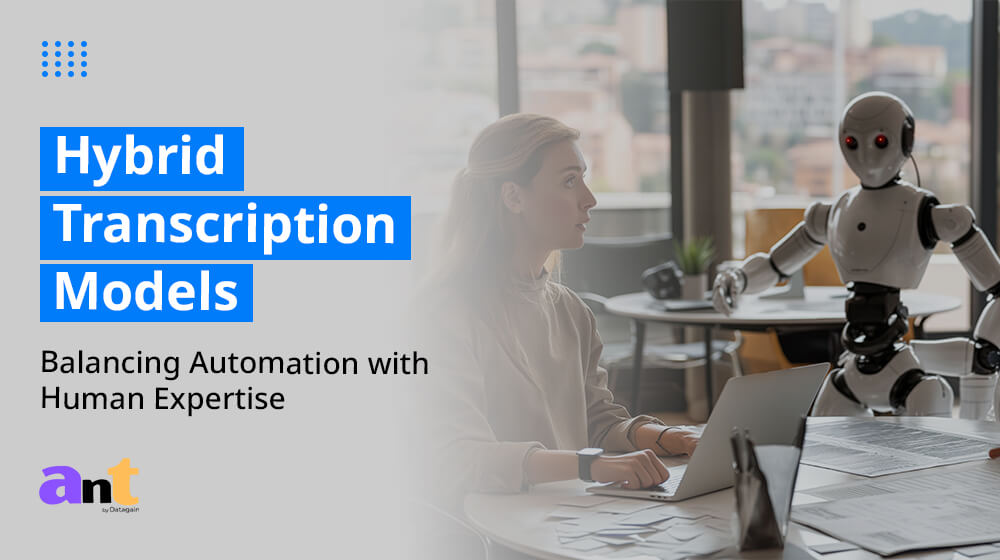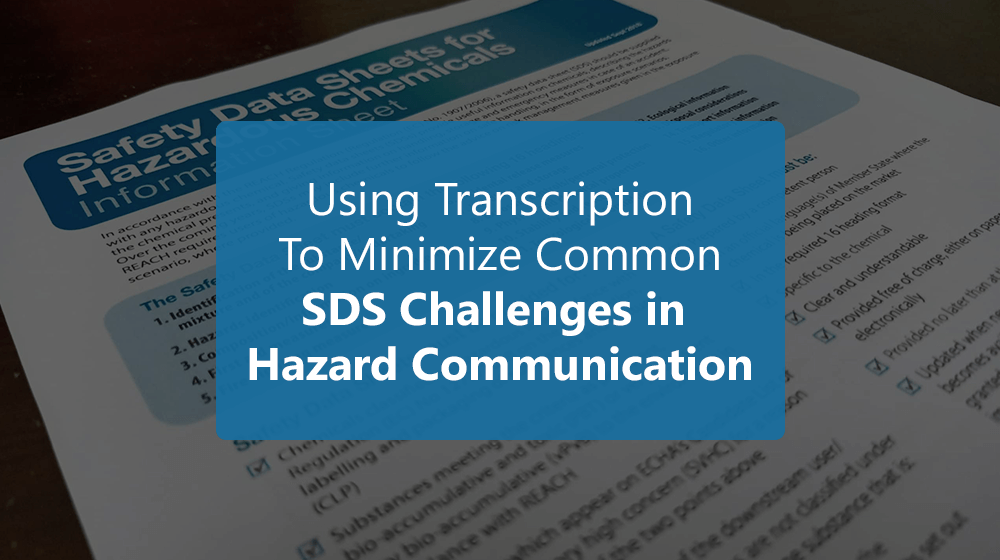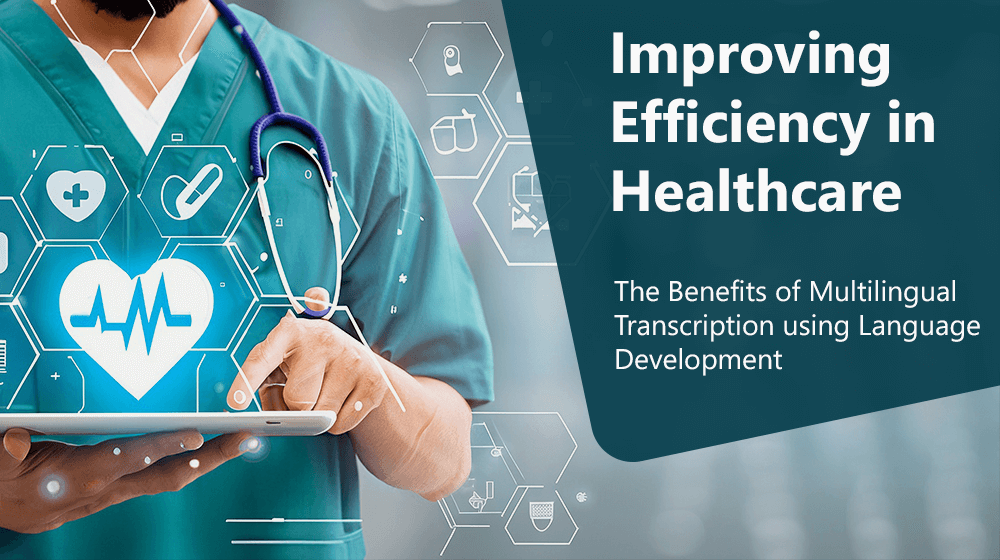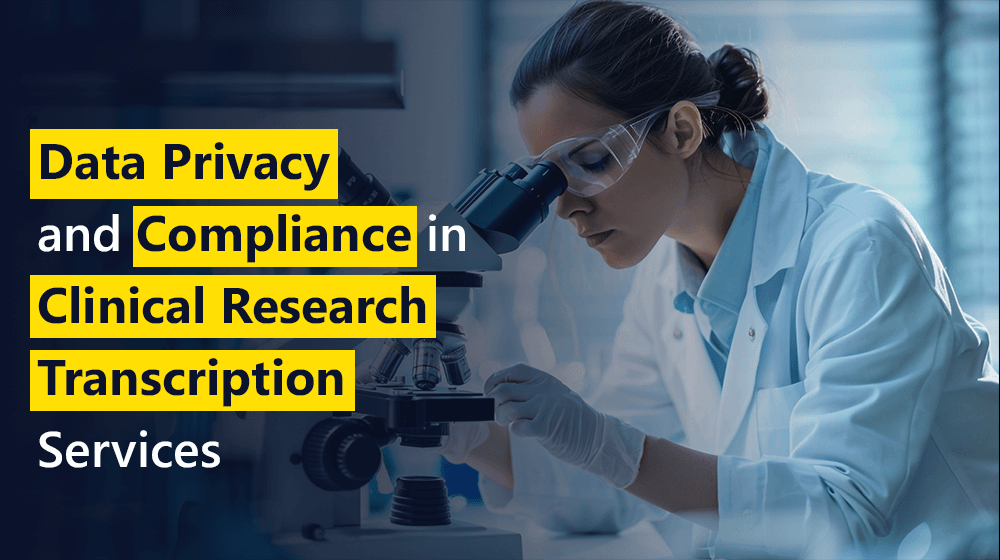Hybrid transcription models combine human and machine transcription for accurate results. Balancing human expertise and automation is key. Explore this emerging transcription model, its applications, pros and cons, and upcoming trends.
Knowing Different Transcription Models
Human Transcription
Human transcription has been the cornerstone of transcription services for decades. It involves trained professionals listening to audio or video recordings and converting them into written text. Human transcriptionists bring a deep understanding of context, nuances, and complexities of language, ensuring high accuracy and reliability.
Automated Transcription
Automated transcription, on the other hand, utilizes advanced technologies like artificial intelligence (AI) and machine learning to convert spoken words into text. Automated systems are capable of processing large volumes of audio data quickly, making them an attractive option for businesses looking to save time and reduce costs.
Hybrid Transcription
A hybrid transcription model combines the efficiency of automated transcription with the precision of human transcription. This approach ensures that the initial transcription is generated by an automated system, which is then reviewed and edited by human transcriptionists. This combination aims to maximize the strengths of both methods, providing a balanced solution that offers speed, accuracy, and cost-effectiveness.
The Need for Hybrid Transcription Models
Increasing Demand for Accurate Transcriptions
With the rise of digital content and the need for accessibility, the demand for accurate transcriptions has surged. Industries such as legal, medical, media, and education require precise transcriptions to maintain records, enhance accessibility, and ensure compliance. While automated transcription offers speed, it often falls short in terms of accuracy, especially in complex scenarios.
Challenges With Automated Transcription
Despite significant advancements, automated transcription systems still struggle with certain aspects of transcription:
Accents and Dialects: Automated systems may have difficulty understanding diverse accents and dialects.
Background Noise: They can struggle to differentiate between background noise and the main speaker.
Context and Nuance: Machines lack the ability to grasp context, cultural references, and nuanced language, leading to potential misinterpretations.
The Role of Human Expertise
Human transcriptionists excel where automated systems falter. They can understand context, manage varying accents, filter out background noise, and interpret nuances in speech. However, human transcription is time-consuming and costly, making it less viable for large-scale projects.
How Hybrid Transcription Models Work
The Process of Hybrid Transcription
1. Automated Transcription: The process begins with an automated transcription system that quickly converts the audio into text. This step leverages the speed and efficiency of AI, providing a rough draft of the transcription.
2. Human Review and Editing: Once the initial automated transcription is complete, human transcriptionists review and edit the text. They correct errors, fill in gaps, and ensure the transcription accurately reflects the audio content.
3. Quality Assurance: The final step involves a quality assurance process where the edited transcription is thoroughly checked for any remaining errors or inconsistencies.
Balancing Speed and Accuracy
The hybrid model effectively balances speed and accuracy. Automated systems handle the bulk of the transcription work, significantly reducing turnaround time. Human transcriptionists then add their expertise to refine the output, ensuring high levels of accuracy and contextual understanding.
Benefits of Hybrid Transcription Models
Enhanced Accuracy
Combining automated transcription with human expertise leads to highly accurate transcriptions. The initial automated process ensures a quick turnaround, while human transcriptionists fine-tune the results, correcting any inaccuracies and adding contextual insights.
Cost-Effectiveness
By automating the initial transcription phase, hybrid models reduce the time human transcriptionists need to spend on each project. This efficiency translates into cost savings for businesses, making high-quality transcription services more affordable.
Scalability
Hybrid transcription models are scalable, making them suitable for projects of all sizes. Automated systems can handle large volumes of audio data quickly, while human transcriptionists can focus on ensuring accuracy, regardless of the project’s scale.
Flexibility
These models offer flexibility in terms of language, industry-specific terminology, and complexity of content. Human transcriptionists can adapt to different requirements and ensure the final transcription meets the specific needs of the client.
Applications of Hybrid Transcription Models
Legal Industry
In this industry, accurate legal transcription services for court proceedings, depositions, and client interviews are crucial. Hybrid transcription models ensure that legal professionals receive precise and reliable transcriptions, aiding in case preparation and legal documentation.
Medical Field
Medical transcriptions must be highly accurate to ensure patient records are correctly maintained. Hybrid models help in transcribing complex medical terminology accurately, enhancing patient care and compliance with regulations.
Media and Entertainment
For the media and entertainment industry, transcriptions of interviews, podcasts, and video content need to be both accurate and timely. Hybrid transcription models provide the necessary balance, ensuring content creators receive high-quality transcriptions quickly.
Education
Academic transcription services help in better documentation and accessibility of lectures, seminars, and research interviews.Hybrid models cater to these needs by providing reliable and detailed transcriptions, aiding in knowledge dissemination and research.
Challenges and Solutions in Implementing Hybrid Transcription Models
Technological Integration
Integrating automated transcription systems with human review processes can be challenging. Ensuring seamless collaboration between AI and human transcriptionists requires robust technological solutions and effective workflow management.
Solution: Utilizing advanced transcription software that facilitates easy handoff between automated and human processes can streamline integration. Implementing clear protocols for each stage of the transcription process ensures smooth collaboration.
Quality Control
Maintaining consistent quality across transcriptions can be difficult, especially with varying levels of complexity in audio content.
Solution: Implementing a rigorous quality assurance process and regular training for human transcriptionists can help maintain high standards. Leveraging AI tools to highlight potential errors for human review can also enhance quality control.
Data Security
Protecting sensitive information during the transcription process is paramount, particularly in industries like legal and medical.
Solution: Employing secure transcription platforms with robust encryption and access controls can safeguard data. Regular audits and compliance with data protection regulations ensure confidentiality and security.
Future of Hybrid Transcription Models
Advancements in AI and Machine Learning
As AI and machine learning technologies continue to evolve, automated transcription systems will become more sophisticated, improving their accuracy and contextual understanding. This progress will enhance the effectiveness of hybrid transcription models, further reducing the need for extensive human intervention.
Increasing Adoption Across Industries
With their proven benefits, hybrid transcription models are likely to see increased adoption across various industries. Businesses will continue to leverage these models to achieve high-quality transcriptions efficiently and cost-effectively.
Enhanced Collaboration Tools
The development of advanced collaboration tools will facilitate smoother integration of automated and human transcription processes. These tools will enable real-time collaboration, ensuring faster turnaround times and higher accuracy.
Conclusion
Hybrid transcription models, combining human and automated transcription, are revolutionizing the transcription industry. Their applications span various fields, including law, medicine, education, and corporate sectors.
At ANT Datagain , we use hybrid transcription to deliver cost-effective, customized results. Contact us for transcription services that help you stand out.

















